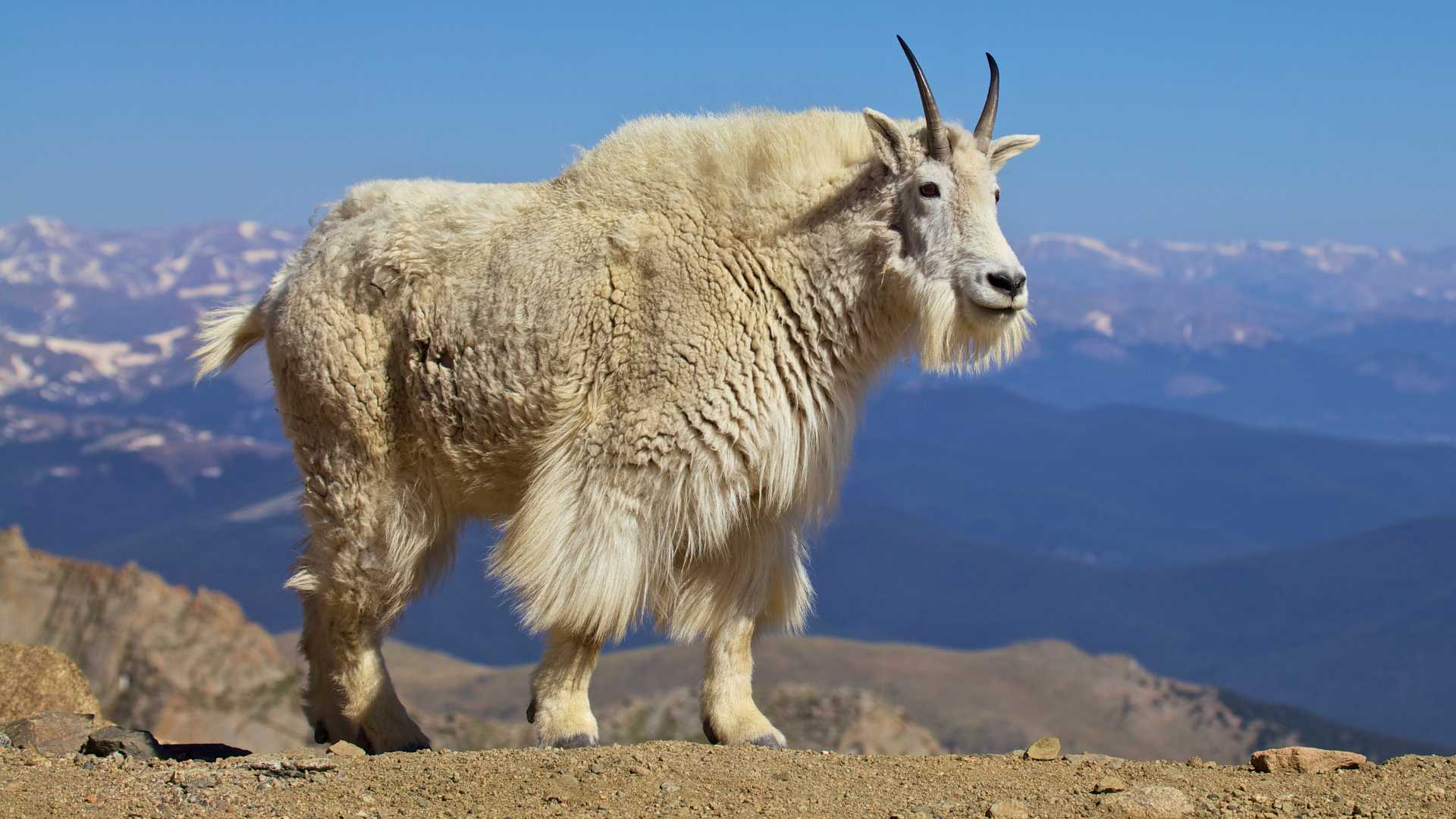Physical characteristics
Mountain goats (Oreamnos americanus) are relatively large animals with an average height of 3-4 feet at the shoulder and weigh between 100-300 pounds. Both males and females have curved black horns, with the males having longer horns. The coat of the mountain goat is thick and shaggy, and it is mainly white, which provides good camouflage in the snowy mountain terrain. Their hooves are specially adapted with a hard outer shell and rubbery center, which helps them maintain grip on the rocky terrain.
Behavior
Mountain goats are social animals and are often seen in groups or bands of up to 20 individuals. They are active during the day and spend most of their time climbing and foraging. They are excellent climbers and can climb steep cliffs and rocky mountainsides with ease. These goats also use their horns for defense against predators and other goats during fights.
Habitat
Mountain goats are found in the mountainous regions of North America, including Alaska, the Rocky Mountains, and the Cascade Range. They inhabit alpine and sub-alpine regions that are characterized by steep cliffs, rocky outcrops, and snow-covered terrain.
Diet
Mountain goats are herbivorous and feed on a variety of vegetation, including grasses, lichens, and mosses. They are well adapted to their habitat and can digest the tough plant materials found in the rocky mountain terrain.
Breeding
Mountain goats mate in November and December, and females give birth to a single kid after a gestation period of around six months. The young are born with a full coat of fur and are able to climb shortly after birth. Female goats reach sexual maturity at around two years of age, while males reach sexual maturity at around three years of age.
Ecological role
Mountain goats play an essential role in their ecosystem as they help to control plant growth and provide a food source for predators such as wolves and bears. They also help to redistribute nutrients in the environment as they move around and forage.
Mountain Goat Hunting
Hunting of mountain goats is strictly regulated and permitted only during certain times of the year and in designated areas with limited permits. The goal of hunting is to maintain a sustainable population of goats while providing opportunities for outdoor enthusiasts to enjoy hunting as a recreational activity.
In many jurisdictions, mountain goat hunting is highly regulated, and hunters are required to obtain permits and tags before hunting. The number of permits issued is often limited, and hunters are typically required to take a course on safe and ethical hunting practices before being granted a permit.
It is important to note that hunting can have a significant impact on the population of mountain goats, and it is essential to follow hunting regulations and guidelines to ensure that the population remains sustainable. Conservation efforts also play a critical role in maintaining healthy populations of these goats and ensuring that hunting remains a viable option for future generations.
Tracks & Signs
Mountain goat tracks are distinctive and easily identifiable. Their cloven hooves have two toes that spread wide apart, allowing them to grip and navigate rocky terrain. The tracks may measure around 3 to 4 inches (7.6 to 10.2 cm) in length.
Conservation
Mountain goats are not currently considered endangered or threatened. However, habitat loss and climate change may have an impact on their populations in the future. To ensure the long-term conservation of mountain goats, conservation efforts focus on habitat protection and management, hunting regulations, and research to better understand their ecology and behavior.
Did You Know?
Mountain goats have remarkable balance and can maintain stability even on precarious surfaces.
Their hooves have a rubbery, rough texture with a specialized outer rim that provides them with superior grip on rocks, allowing them to traverse steep slopes and cliffs with confidence.
They are herbivores and have a specialized diet.
They are often referred to as “grass-eating acrobats” because they feed on a variety of vegetation, including grasses, sedges, herbs, and shrubs. Their ability to access high-elevation vegetation allows them to find food sources where other herbivores cannot reach.
Mountain goats have a complex social structure.
They live in small groups called bands, typically consisting of adult females and their young. Males form separate bachelor groups until the breeding season, during which they compete for mating opportunities.
Image sources: Dirttime.ws




